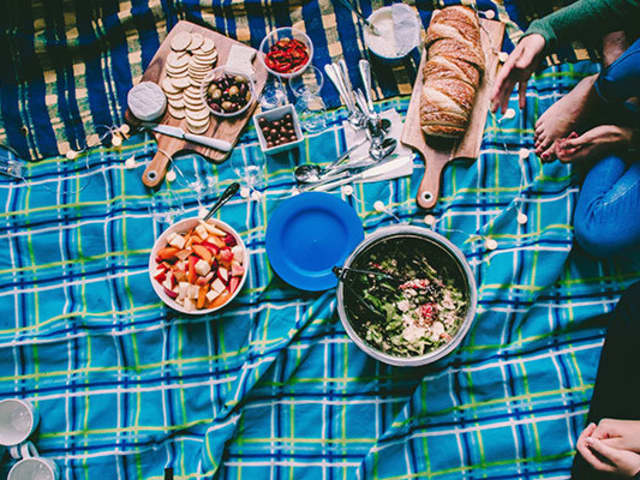This article is the first in a three-part series about Wabi Sabi, a philosophy for living that has its roots in a 15th Century Japanese tea ceremony. Practitioners of Wabi Sabi learn how to embrace imperfection as a path to greater happiness. We hope these posts will inspire you in your relationships, while entertaining, and even when simply lying around the house.
Robyn Griggs Lawrence is the former editor-in-chief of Natural Home. One of the things she loved about her old job was visiting amazing houses to feature in the magazine. But there was a downside to all of that fabulousness. "I'd go back to my own very nice house and feel that it was less than perfect," she says.
One of the homeowners she interviewed gave her a copy of Leonard Koren's book, "Wabi-Sabi for Artists, Designers, Poets & Philosophers," and Lawrence started to appreciate what she already had. "I realized that my home didn't have to be perfect, and the older I get, the less I care," she remarks.
According to Koren, who popularized the concept of Wabi Sabi in the West, the philosophy can be traced to the 15th and 16th centuries, when Japanese monks performed ritual tea ceremonies using simple, locally crafted utensils as a counterpoint to the more ornate Chinese aesthetic that prevailed at that time.
Lawrence, the author of "The Wabi Sabi House" and "Simply Imperfect: Revisiting the Wabi Sabi House," explains "Embracing Wabi Sabi means appreciating and accepting the aged, whether it's the objects we live with, or ourselves."
Unlike feng shui, the Chinese art of placement, which has formal design rules such as choosing specific colors to help you achieve your goals as they relate to relationships, there is no one right way to adapt Wabi Sabi to your own environment.
One way to bring Wabi Sabi into your home, suggests Lawrence, is by repurposing items you already have. A lidless teapot, for example, can become a flowerpot on your nightstand. Jelly jars can hold spoons. Using homemade items (even if they were made by someone else) is characteristic of Wabi Sabi, as they not only reflect the personality of the person making the item, but will also be more likely to show their age over time, which follows the Wabi Sabi principle of appreciating imperfection.
Making things at home is also a great way to get your family involved and share time together. In "Simply Imperfect," Lawrence suggests two of her favorite handmade projects:
-
Indoor Rock Gardens. Whenever a pebble or small stone catches your fancy, bring it home. Place your stones in a small frame on your desk, and arrange, then rearrange, to suit your whims.
-
Herbal Vinegar. Grow your own herbs. If you don't have outdoor space, consider an indoor herb garden. Steep the herbs in vinegar for two weeks for a full-bodied flavor. White wine vinegar pairs well with herbs such as dill, basil, tarragon, chervil, and lemon balm. Red wine vinegar is heartier and goes well with sage, thyme, parsley, and bay leaves. Herbal vinegars also make thoughtful homemade hostess gifts for parties.
Appreciating the outdoors is also an important element of Wabi Sabi, whether it's filling an indoor vase with seasonal flowers and plants, or creating an outdoor space of uncluttered simplicity as architect, landscape designer, and artist John Salat, owner of Zen Architect, does.
Create an outdoor area that reflects the environment by using native plants, use materials that age and weather over time, like wood versus plastic, and don't be in a rush to sweep up falling leaves or flowers past their prime. "Blemishes and irregularities only add authenticity," notes Salat.
Bringing in elements of Wabi Sabi to your home is not difficult. Start by simply taking a look around your house, advises Lawrence.
Can you tell a story about most of the objects you see? Does your home say anything about you? Does your bedroom include something that makes your smile because of a fond memory tied to it?
If your world seems a little cold, start injecting your personality into your home environment. We recommend starting with your bedroom since you spend one-third of your life there. It doesn't take much. Now, go have fun being imperfect.
Want even better sleep? Sleepers who routinely use their Sleep Number 360® smart bed features and SleepIQ® technology get almost 100 hours more proven quality sleep per year.*
Like diet and exercise, quality sleep has a profound impact on our physical, emotional and mental wellbeing. Because no two people sleep the same, Sleep Number 360® smart beds, with SleepIQ® technology, sense your movements and automatically adjust firmness, comfort and support to keep you both sleeping comfortably and provide proven quality sleep. Find your Sleep Number® setting for your best possible night's sleep, and if you own a Sleep Number® bed, log in to your InnerCircle℠ Rewards account to see your exclusive offers, refer friends and more.
*Based on internal analysis of sleep sessions assessing sleepers who use multiple features of Sleep Number® products. Claim based on sleepers achieving over 15 more minutes of restful sleep per sleep sessions.
